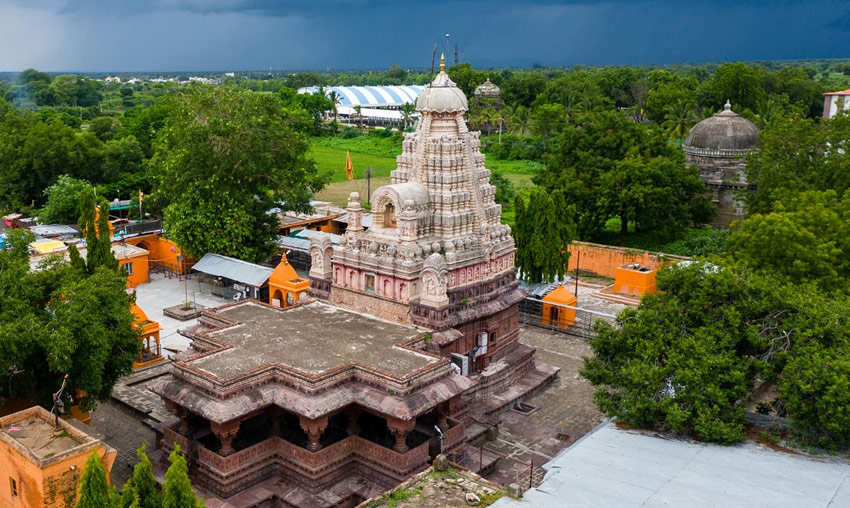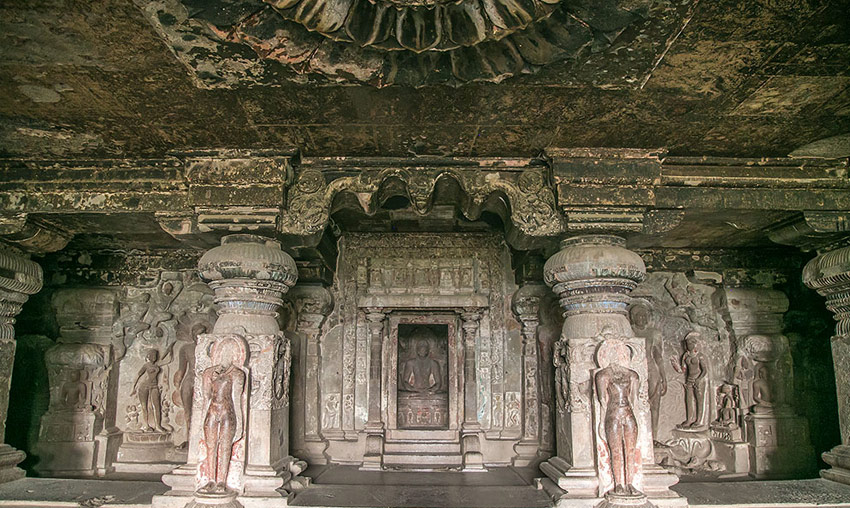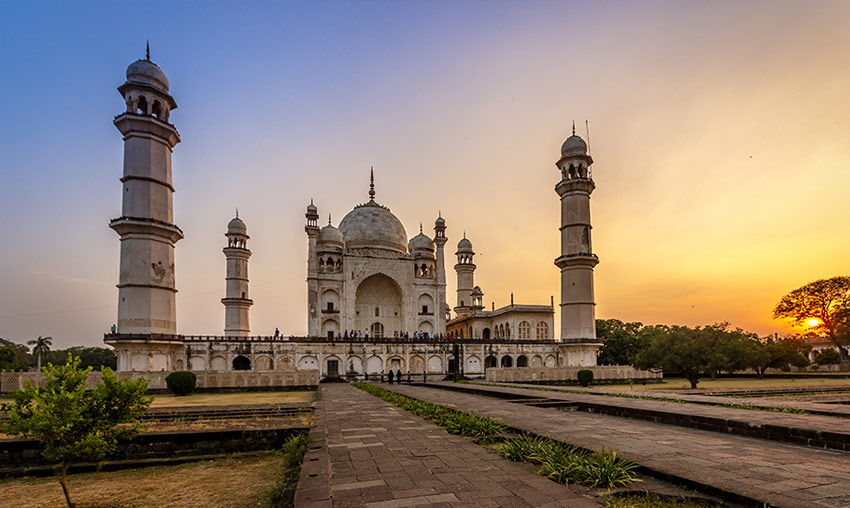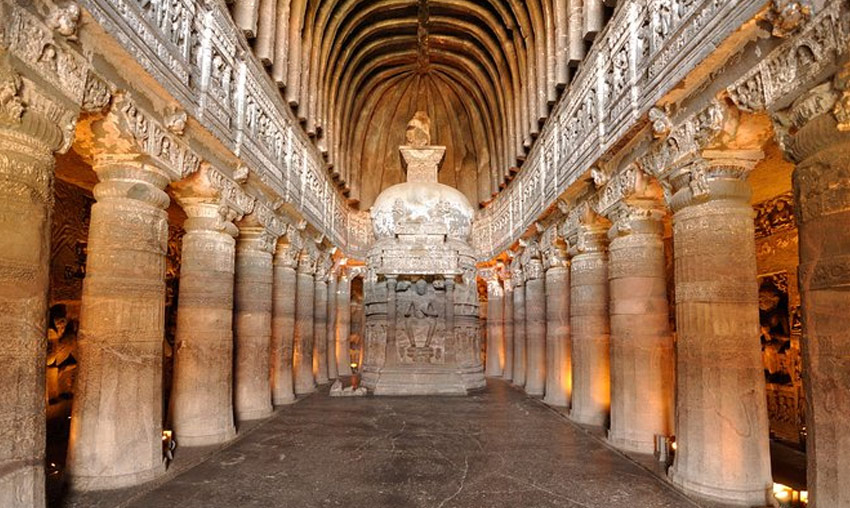Grishneshwar Temple (Jyotirlinga) Aurangabad | Pooja Timings, History
“One of the 12 Jyotirlingas”
One of India’s twelve Jyotirlingas, Grishneshwar Temple in Ellora, is a UNESCO World Heritage Site. This Aurangabad Jyotirlinga, also called Ghrneshwar or Dhushmeshwar Temple, is devoted to Lord Shiva and is regarded as a significant pilgrimage destination. The smallest of the Jyotirlingas, Grishneshwar is regarded as India’s final or twelfth Jyotirlinga.
Everyone is welcome to enter the Grishneshwar Temple, however men must be bare-chested in order to access the Garbhagriha, the main shrine that houses the Shiva Linga. Additionally, this is one of the few Jyotirlingas in India where followers are allowed to touch the Shiva Linga with their own hands.
One of the most revered sites in Aurangabad, the temple’s architecture is in the South Indian style. The Grishneshwar Temple’s five-tiered shikhara is beautifully carved and built in the manner of ancient temple construction. The current temple was constructed in the 18th century by Queen Ahilyabai Holkar of Indore and has undergone multiple reconstructions.
Legend of Grishneshwar Jyotirlinga
Ghushma, a lady who is married to her sister’s husband, Sudharm, is the subject of the most well-known Grishneshwar legend. Sudeha, the sister, was unable to conceive with Sudharm, the husband. She asked her sister Ghushma to marry Sudharm out of concern of having no children. She also suggested that she build 101 Shivalingas, pay prayers to Lord Shiva, and submerge them in a body of water. She reportedly gave birth to a boy after her prayers were heard. It is also thought that Sudeha killed her son and threw him in the same body of water because she was envious of her sister. By that time, the son was married.
The son’s wife found her husband absent the following day and found bloodstains on the bed. When Ghushma’s daughter-in-law arrived to inform her about her son, she was in the middle of her daily prayers. Ghushma carried on with her routines without being bothered by her story. She had faith that her son will be saved by Lord Shiva. She started chanting, and as she was ready to submerge the Shivalinga in the body of water following the prayers, she noticed her son approaching. Appreciating her devotion, Lord Shiva also showed up and requested another blessing. Ghushma asked him to live there forever. As a result, Lord Shiva became known as Ghushmeshwar and took the form of a Jyotirlinga.
History of Grishneshwar Jyotirlinga Temple
Although the Grishneshwar Jyotirlinga Temple’s exact founding date is unknown, it is thought to have been constructed before to the thirteenth century. The temple was demolished somewhere between the 13th and 14th centuries when the Mughal Empire conquered the area that encompassed Velur (now Ellora), where the temple is situated. The area saw some terrible Hindu-Muslim battles.
As the chief of Verul, Chhatrapati Shivaji Maharaj’s grandfather, Maloji Bhosale, was instrumental in the temple’s reconstruction in the sixteenth century. According to legend, Maloji Bhosale discovered a secret wealth that he used to rebuild the temple and construct an artificial lake in Shanishingnapur.
Even after the 16th century, the Mughals continued to attack the Grishneshwar Jyotirlinga Temple on multiple occasions. Between 1680 and 1707, during the Mughal-Maratha wars, it needed to be rebuilt a couple more times. When the Marathas overthrew the Mughal Empire in the 18th century, it underwent its final reconstruction. The temple that is now standing was rebuilt with funding from Rani Ahalyabai, the Queen of Indore.
Architecture of Grishneshwar JyotirlingaTemple
- The architecture of Grishneshwar Temple is typical of South Indian temples.
- The temple complex has a sanctum sanctorum and inner chambers.
- The structure is 44,400 square feet in size and is composed of red-colored stones.
- The Grishneshwar Temple is the smallest Jyotirlinga temple with these measurements as well.
- The temple features many pillars with elaborate mythical carvings and a five-layered tall shikhara.
- The stories of Lord Shiva and Lord Vishnu’s 10 incarnations are mostly portrayed on the red-stone walls.
- The Shivalinga faces east in the sanctum sanctorum, also known as the garbhagriha. It has a statue of Nandi in the hallway and is roughly 289 square feet in size.
How to Reach Grishneshwar Jyotirlinga Temple
Grishneshwar Temple is accessible by road from Aurangabad. Buses operated by Maharashtra State Transport connect the city and the temple, which are 31.5 kilometers apart. The distance to the Aurangabad Central Bus Station is only 29 kilometers. Nearly every day, there are buses going to Ellora.
The second-best way to go to Grishneshwar Temple from Aurangabad is to take a taxi or drive yourself. The route that needs to be followed is SH 60–NH 52. Bus passengers will need to get off at Grishneshwar Temple Road and make their way to the temple on foot.
Grishneshwar Jyotirlinga Timings
Timings : Usual Timings – 05:30 AM to 09:00 PM (Open all days of the week)
Shravan Month Timings – 03:00 AM to 11:00 PM (all days from August to September)
Time Required : 3-4 hours
Entry Fee : Free
Restricted Items : Mobile Phone
Camera
Food items
Belt



